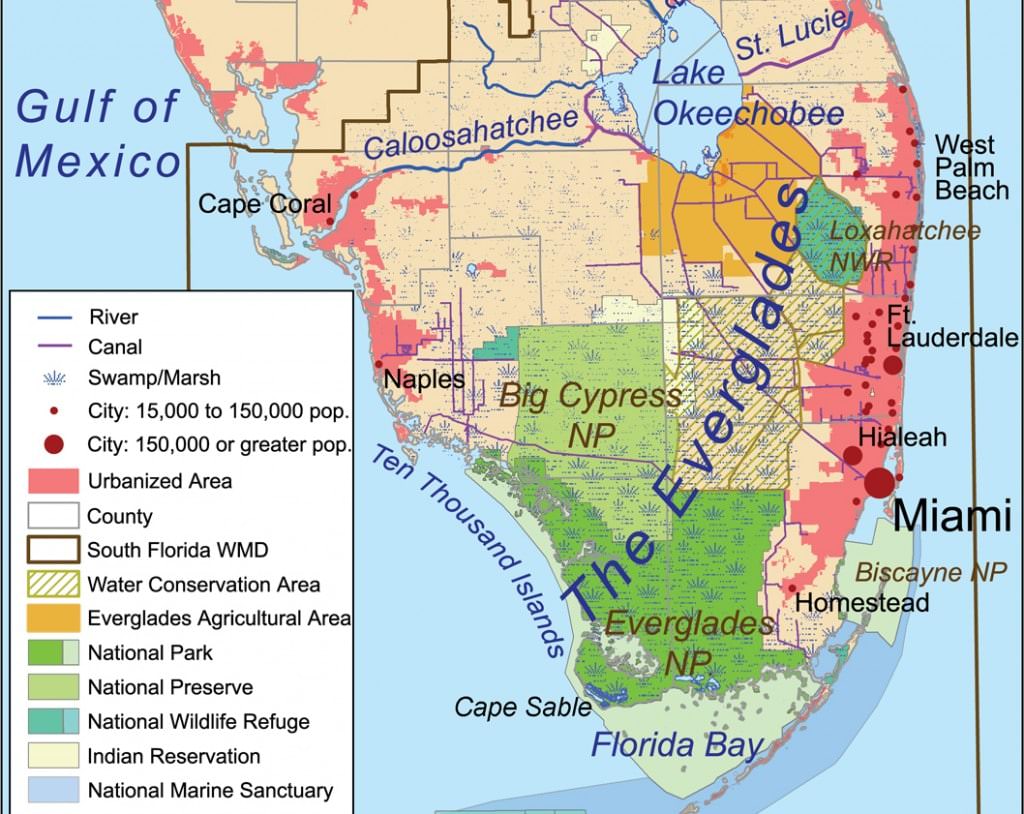What’s happening with Lake Okeechobee and the water releases?
We know there’s been a lot of buzz about the Lake Okeechobee “Lake O’” water releases lately, and we’ve spoken to a few people that are, unfortunately, mis-informed about the issue.

While, we are certainly not experts on the matter, Susan and I have some insights to share as long-time residents of Southwest Florida.
This is not a safety issue.
The first thing I want to point out is that this is a not safety issue for SWFL visitors and residents. While the large releases of lake water certainly have a negative impact on marine life, it is not toxic or unsafe for you, your children or your pets to go in the water.
You see, when the fresh water from Lake O’ is released down the Caloosahatchee River and into the salt water of the Gulf, it causes an imbalance of salinity (salt content) in the water. This change in salinity is the major cause of damage to the marine life. However, it’s important to remember that this does not affect us as beach goers! Much of the pollution that is referenced in the news is actually fertilizer from agricultural fields, and is also NOT dangerous to people. To ensure this, authorities and organizations such as SCCF actively monitor our water for any safety concerns (more on this below).
This has been going on since 1938!
The media often treats everything as “breaking news!”, but in reality, this has been an ongoing problem for years (sadly). This past January, Florida experienced unusually high levels of rain which caused a water release to occur during “tourist season” instead of just during the summer months.
For those visiting and vacationing in the area, and even for those who own homes here on Sanibel and SWFL, this means that you have been experiencing these (sometimes small, sometimes large) water releases every year that you’ve been living and vacationing here since 1938. This is not a new issue!

We are happy this is getting attention.
The media’s attention (and sometimes exaggerated reporting) on the issue isn’t all “bad news,” in our minds. We hope that the public spotlight will motivate our politicians to take action on this long-time situation. Much of the problem can be corrected by restoring the natural flow of water into the Everglades. However, this also comes with negative effects for the farmlands and sugar industry in that area, but that’s a topic for another day…
So, how does this affect you?
Immediately after the releases, water around the mouth of the Caloosahatchee River darkens and reduces in clarity. This is caused by tannins from natural vegetation that are swept up in the river. Think of it as similar to how tea leaves darken the water in your cup. This is brownish water is normal for rain-water fed rivers in Florida. The problem here is the uneven flow of the water caused by man-made water management. The clarity of the water soon returns to normal after the release is completed.

But I Heard About “Toxic Algae”?
Algae blooms do occur in Gulf waters – in fact, they occur world-wide. All Gulf beaches experience red-tide, as these algae blooms are often called. Research does indicate that excess nutrients can extend the frequency and duration of algae blooms like red-tide, but it is not the cause. Red tide varies in intensity and can be very irritating to breath when it comes onshore. If strong concentrations exist, it can kill fish and marine mammals. It also gets into shellfish and can make them unsafe to eat. It does NOT make the water or air toxic to people.
Again, this is nothing new. As far as I can tell, we did not experience any red-tide affect caused by the water release.
A great resource to check the quality of our local water is the National Oceanic and Atmospheric Administration (NOAA). They monitor and publish reports on water quality all over the Gulf. If you are more geeky (like me) you’ll like this map-based tool from NOAA.
How did this happen?
As we previously noted, routine water releases from Lake Okeechobee aren’t a new occurrence. In fact, the lake has a long history of overflowing, and in bad storms such as the Okeechobee Hurricane in 1928, the water overflow actually killed thousands of people. Following that storm, the Federal government had the U.S. Army Corps of Engineers (Corps) build the Herbert Hoover Dike and 67 miles of dikes and levees along the lake’s southern shore. So, since 1938, lake levels have been managed, which officials currently seek to keep between 12.5ft – 15.5ft.
We found this Fact Sheet from the South Florida Water Management District (SFWMD), helpful in explaining some background information on Lake Okeechobee, how lake levels are operated, and why larger releases occur.

Hopefully, this helps to clear up some of the mis-information you might have read or heard in the news. Again, we are not experts on the issue, but we are happy to talk to you about our thoughts on the water releases of Lake O’.
So, if you have any questions regarding your past, current or future home purchase here on Sanibel or Captiva Island, please feel free to contact us directly – we’re happy to shed further light on the situation and answer any questions you have!
